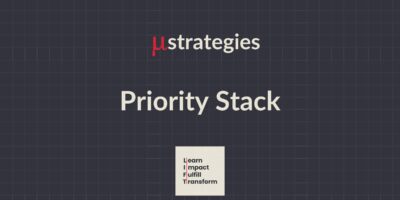Digital transformation is no longer a distant goal – it’s the heartbeat of competitive organizations. As businesses worldwide double down on transforming their processes, cultures, and customer experiences, one fact is becoming painfully clear: execution is the cornerstone of success.
This essay is the ninth installment in the PPPP-III Framework series, which introduces a structured approach to creating and implementing effective strategies to drive meaningful transformation. In previous essays, we’ve explored the Framework’s seven essential elements, covering everything from Product to Platform, Persona, Process & Tooling, Instrument, Insight, and Investment. Each piece lays the technical groundwork, but this framework would be incomplete without addressing the “Barriers to Execution” – the human and cultural roadblocks that can stop even the most sophisticated transformation plans in their tracks.
The essays so far have mapped out how leaders can systematically structure their strategies. But even with this structure, execution often falters, not due to a lack of ideas, technologies, tools, or processes but due to deeply rooted barriers within organizations.
Why are these barriers critical to address?
Global transformation spending is set to grow from $2.15 trillion in 2023 to $3.9 trillion by 2027. Yet, statistics show that 70% to 95% of these transformations will fail – primarily due to poor execution. Execution, not strategy alone, determines the difference between success and a missed opportunity.
7 Hidden Barriers That Sabotage Execution
In this installment, let’s unpack the seven barriers that stand between strategy and execution and how leaders can dismantle them.
- Lack of Mission Ambition and Clarity
A successful transformation journey begins with a clear and ambitious mission. Yet, in countless organizations, teams are moving forward without a defined destination. A well-crafted mission goes beyond mere ideals; it becomes a unifying purpose that directs every team’s energy toward a shared goal. Reflect on Amazon’s transformation from a bookstore to a digital giant; it all started with an ambitious mission to “be the world’s most customer-centric company.”
Solution: Leaders must start by articulating a mission that is clear, ambitious, and measurable.
Simon Sinek aptly says, “People don’t buy what you do; they buy why you do it.”
By defining the “why,” leaders set a foundation that team members can believe in, aligning their work with a larger purpose and increasing their commitment to achieving it.
2. Insular Culture
Innovation thrives in openness, but an insular culture often holds organizations back, especially when they’re steeped in past success. Consider Nvidia’s journey to becoming a leader in AI technology. By cultivating a culture that valued fresh ideas from both inside and outside the organization, Nvidia continuously evolved, while companies stuck in their comfort zones often became irrelevant.
Solution: Challenge the “this is how we’ve always done it” mentality. Break down silos, welcome new perspectives, and reward curiosity and adaptability.
Carl Jung’s words resonate here: “The privilege of a lifetime is to become who you truly are.”
For organizations, that means becoming agile and adaptive, not constrained by history but inspired by what’s possible.
3. Cruise vs. Grow Mentality
Some companies stay in “cruise” mode, delaying action until a crisis strikes. Blockbuster, for example, coasted until Netflix’s proactive growth left it obsolete. Organizations with this mindset miss opportunities to innovate and adapt, waiting until it’s too late to act.
Solution: Embed a growth mindset in your organizational culture. Leaders must consistently ask, “What’s our next opportunity?” Encourage teams to look beyond the current success to avoid being blindsided by future disruptions.
Warren Buffett’s advice is clear: “Only when the tide goes out do you discover who’s been swimming naked.”
A growth-driven culture remains proactive, agile, and ready for change.
4. Bias for Action vs. Observation
In organizations that overanalyze, action often takes a back seat to endless discussions. The hesitation to act leads to a passive workforce where people are more comfortable observing than solving. Apple and Amazon, however, embody a “bias for action” that encourages swift, decisive movement, allowing them to adapt faster than competitors.
Solution: Encourage a culture that prioritizes action and allows room for failure as a learning process. Establish clear OKRs (Objectives and Key Results) to guide and track progress.
Jeff Bezos famously noted, “If you double the number of experiments you do per year, you’re going to double your inventiveness.”
Execution demands courage to act and resilience to keep going.
5. Non-Data-Driven Decision Making
Relying solely on experience or intuition often leads organizations astray, particularly in an era where data is readily available. Data-driven companies like Google and Intel align their goals with measurable outcomes, ensuring every decision is backed by insight rather than mere gut feeling.
Solution: Equip teams to make decisions grounded in data. This doesn’t negate intuition, but it balances it.
Adam Grant’s insight, “The mark of an open mind is being more committed to your curiosity than your convictions,” captures this approach.
In any competitive landscape, curiosity, fed by data, is key to making informed, actionable choices.
6. Discomfort with Transparency
Too often, organizations avoid difficult conversations, creating cultures where only good news is shared. In environments where transparency is lacking, teams become reluctant to admit mistakes or challenges, hiding issues that eventually lead to costly consequences.
Solution: Embrace a culture of transparency. Leaders should model open communication and create spaces where honesty is valued.
The Dalai Lama’s teaching, “A lack of transparency results in distrust and a deep sense of insecurity,” is a reminder that transparency builds trust.
By fostering a culture where authenticity is valued, organizations can address problems before they escalate.
7. Customer Neglect
In the pursuit of financial goals, companies sometimes forget the importance of serving the customer. Consider Apple’s relentless commitment to enhancing the customer experience – every product, every update, is designed with the user in mind. This focus on the customer is why Apple remains at the forefront of the technology industry.
Solution: Place the customer at the heart of your strategy. Ask questions like, “Are we solving real customer problems?” and “What do our customers truly value?”
In the words of the great Master, Thich Nhat Hanh , “Compassion is a verb.”
For companies, this means actively caring for customers, not just paying lip service to customer-centricity.
From Barriers to Bridges: Build a Sustainable Path to Transformation
These barriers to execution can seem daunting, but addressing them is neither optional nor impossible. Organizations that overcome these obstacles unlock the full potential of their strategies, transforming not just their processes but their cultures.
Scott Galloway once remarked, “Speed is a function of focus, simplicity, and accountability.”
Leaders who dismantle these barriers set up their organizations for growth, agility, and resilience. Leaders eager to translate strategy into action, can employ a simple and powerful approach to overcome these barriers:
- Set Clear OKRs: Every team should see how their work connects to the larger mission, inspiring and motivating them to contribute to the transformation.
- Establish an Execution Roadmap: Assign ownership, define timelines, and ensure resources align with strategic goals.
- Build Feedback Loops: Regularly assess progress and be agile enough to adjust as needed.
The great Peter Drucker famously said, “Plans are only good intentions unless they immediately degenerate into hard work.”
Through disciplined execution grounded in a clear mission and transparent culture, organizations can achieve meaningful transformation—not by chance, but by design.
Are you ready to face these barriers and clear the path to your success?
And remember we are all just doing our best ~ Assume Positive Intent.
Let me know how I can help.
Adi
What’s next?
In the final essay of the PPPP-III series, we’ll explore “Transformation Metabolism,” where we’ll dive into how leaders can keep the speed and effectiveness with which their enterprises adopt, build, and adapt new capabilities or technologies.








Comments